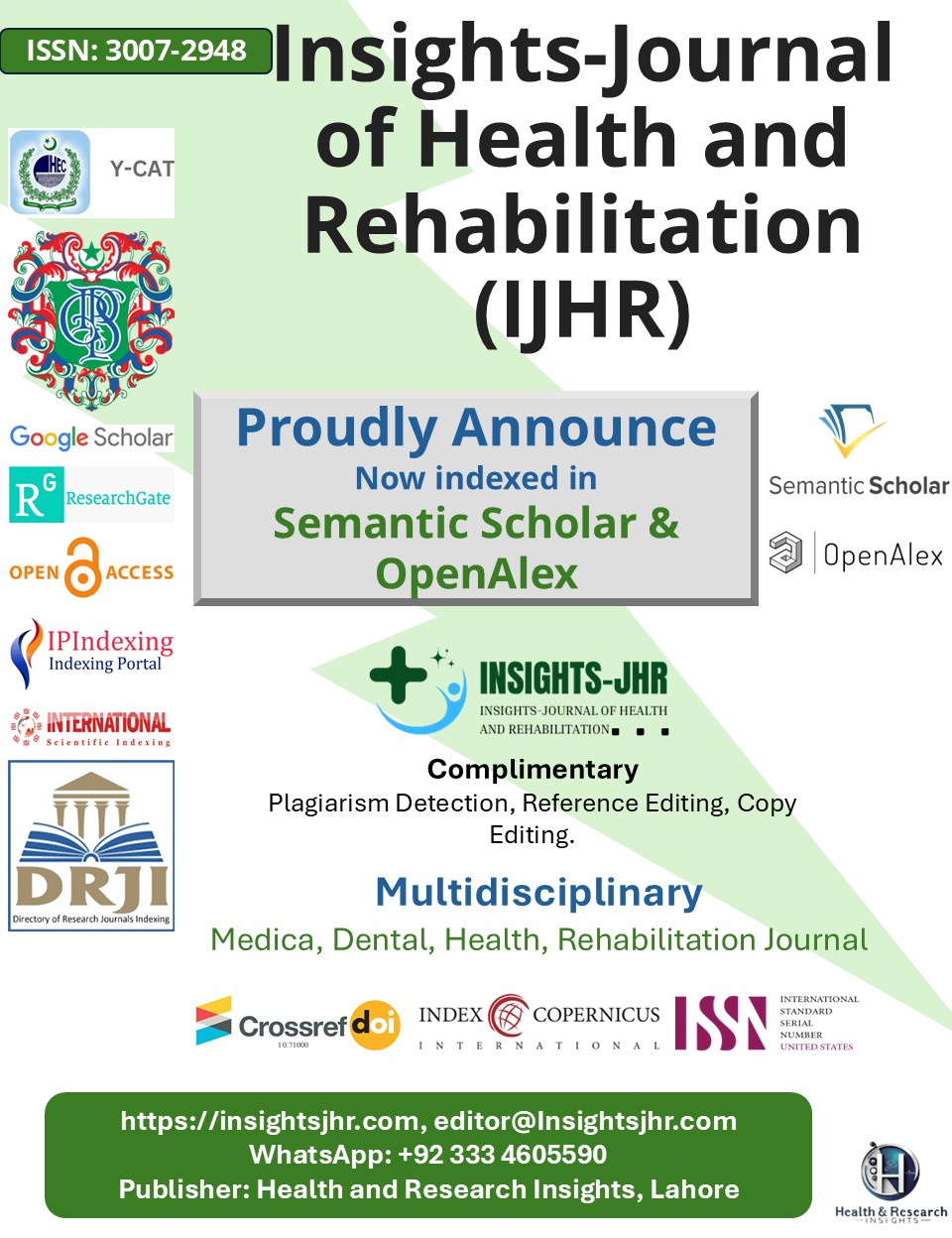EFFECTS OF ACTIVE CYCLE OF BREATHING TECHNIQUE AND POSTURAL DRAINAGE VERSUS ACTIVE CYCLE OF BREATHING TECHNIQUE AND AUTOGENIC DRAINAGE ON PULMONARY FUNCTION TEST IN BRONCHIECTASIS PATIENTS
DOI:
https://doi.org/10.71000/783jc358Keywords:
Active Cycle of Breathing Technique, Airway Clearance Therapy, Autogenic Drainage, Bronchiectasis, Postural Drainage, Pulmonary Function Tests, Respiratory TherapyAbstract
Background: Bronchiectasis is a chronic respiratory disorder characterized by irreversible bronchial dilation, impaired mucociliary clearance, and recurrent infections, leading to progressive pulmonary dysfunction. Airway clearance techniques play a crucial role in managing symptoms and improving respiratory function. The active cycle of breathing technique (ACBT) is a widely used physiotherapy intervention, often combined with postural drainage (PD) or autogenic drainage (AD). However, comparative evidence regarding their efficacy remains limited. This study aimed to evaluate and compare the effects of ACBT combined with postural drainage versus ACBT combined with autogenic drainage on pulmonary function tests (PFTs), arterial blood gases (ABGs), and sputum profile in patients with bronchiectasis.
Objective: To compare the effects of ACBT with postural drainage versus ACBT with autogenic drainage on PFTs, ABGs, and sputum profile in patients with bronchiectasis.
Methods: A randomized clinical trial was conducted, enrolling 36 patients diagnosed with bronchiectasis. Participants were randomly assigned into two groups: Group A received ACBT combined with postural drainage, while Group B received ACBT combined with autogenic drainage. Pulmonary function parameters, including forced vital capacity (FVC), forced expiratory volume in one second (FEV1), FEV1/FVC ratio, and peak expiratory flow rate (PEFR), were assessed using spirometry. Arterial blood gases (pH, PaO₂, PaCO₂, HCO₃⁻) were analyzed using the GEM Premier 3000. Cough and sputum severity were evaluated using the CASA-Q questionnaire. Assessments were conducted at baseline and after three weeks of treatment.
Results: Between-group comparisons showed no statistically significant differences (p>0.05) in PFTs, ABGs, or sputum parameters. However, within-group analysis revealed significant improvements in both groups. In Group A, FVC increased from 2.1L to 2.5L (p=0.019), FEV1 improved from 1.7L to 2.0L (p=0.019), and PEFR rose from 5.2L/sec to 5.8L/sec (p=0.000). In Group B, FVC increased from 2.2L to 2.6L (p=0.019), FEV1 improved from 1.6L to 2.1L (p=0.019), and PEFR rose from 5.0L/sec to 6.0L/sec (p=0.000). ABG analysis indicated significant improvements in pH (p=0.001), PaO₂ (p=0.012), and HCO₃⁻ (p=0.014) within both groups, while PaCO₂ changes were insignificant (p>0.05). Cough and sputum severity significantly decreased in both groups (p<0.05), though between-group differences remained non-significant.
Conclusion: Both ACBT combined with postural drainage and ACBT combined with autogenic drainage proved to be effective in improving pulmonary function, arterial blood gases, and symptom severity in bronchiectasis patients. However, no significant differences were observed between the two techniques, suggesting that both can be utilized interchangeably based on patient preference and clinical feasibility.
Downloads
Published
Issue
Section
License
Copyright (c) 2025 Muhammad Azam Ghaffar, M Behzad Ali, Muhammad Tahir Akram, Omair Khan, Neelam Ashraf , Ahmar Zafar, Adnan Hashim (Author)

This work is licensed under a Creative Commons Attribution-NonCommercial-NoDerivatives 4.0 International License.







